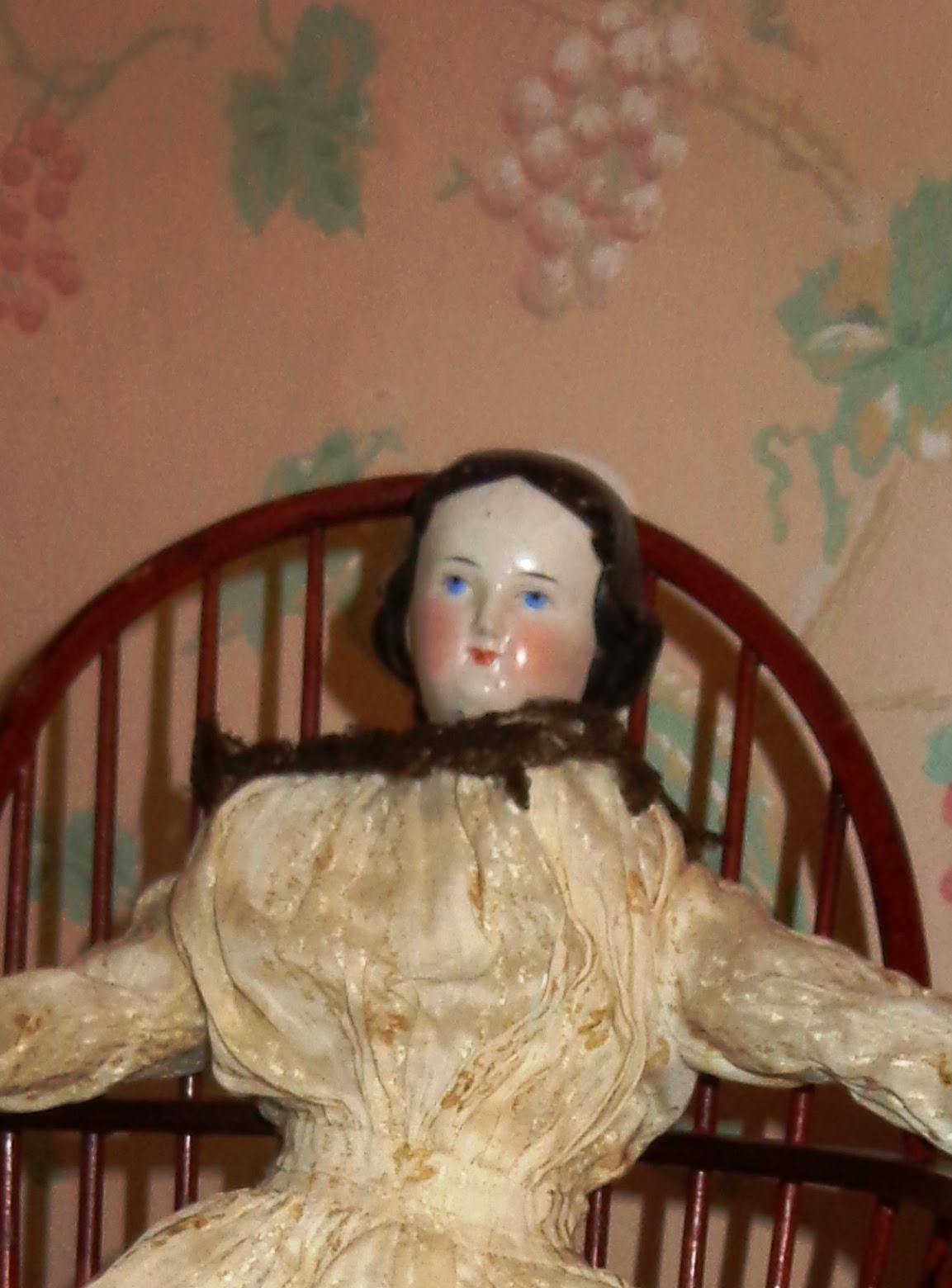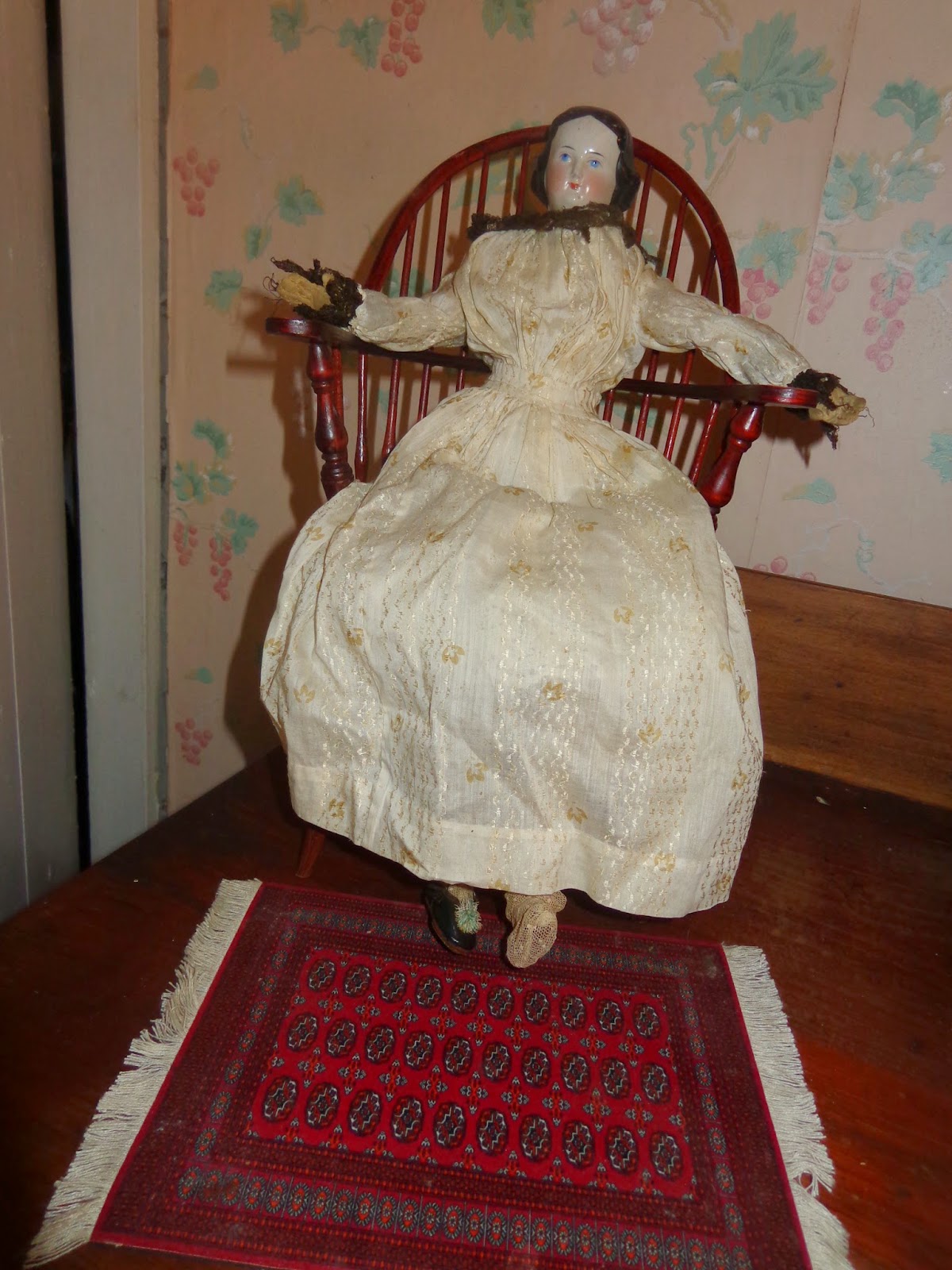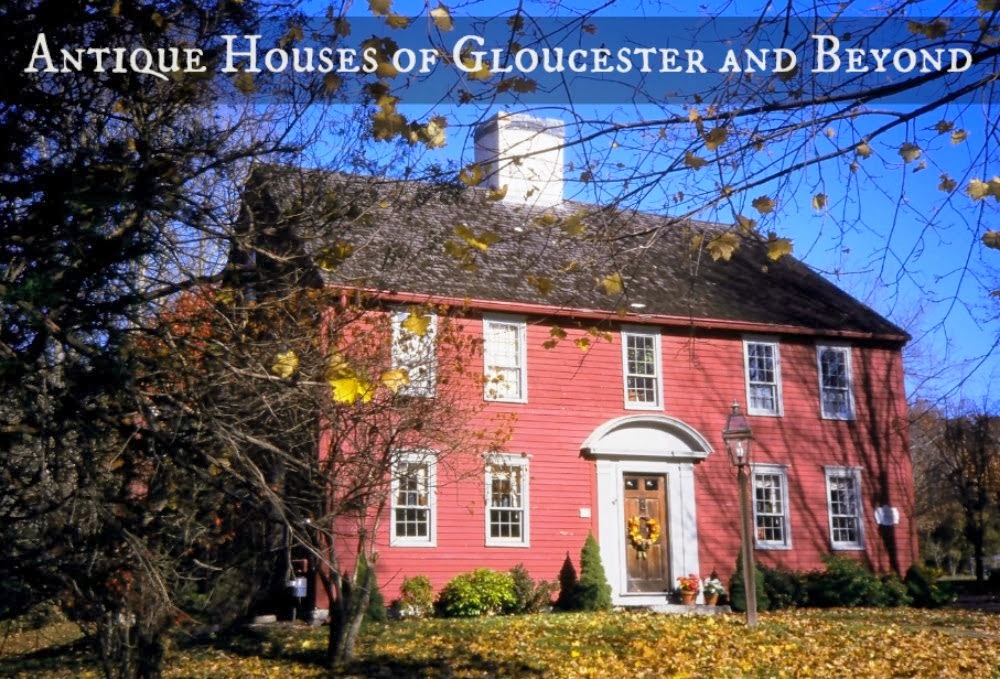COL. JAMES SWAN: THE GLOUCESTER CONNECTION
 |
| Col. James Swan by Gilbert Stuart |
One of the great stories of old New England, perhaps not so familiar to
many, is the story of Col James Swan of Boston.
This story has long captured my interest. I hope you will find these events as fascinating
as I do.
James Swan was from Scotland. He arrived in Boston in the mid 1760s. In business he succeeded. He married Hepzibah Clarke of Boston who came from
wealth. They had four children; a son
and three daughters. One daughter, Christiana, called Kitty, will be highlighted later in this
post.
 |
| Hepzibah Clarke, Gilbert Stuart, 1808 |
Before long Swan was one of the Sons of Liberty, friend of
Paul Revere, John Adams, Thomas Jefferson, George Washington and every
important figure from that time. He was
also acquainted with LaFayette. As a
financier he was successful at least for a time.
Swan's portrait was painted by Gilbert Stuart and Hebzibah’s
portrait was also painted by Gilbert Stuart several years later. Both are now at the Museum of Fine Arts in
Boston. (MFA)
In 1787 at a time when his business in Boston was not doing so
well he went to France. His wife and
children accompanied him and they were there at the time of the French
Revolution and the tragic end of Marie Antoinette and Louis XVI.
 |
| Sketch of the house on Tremont Street |
In the 1790s they returned to Boston where they built a
house on a hill in Dorchester The new neoclassical house has been thought to
have been designed by Charles Bullfinch but I am not sure this has been authenticated although it seems likely. Sadly, the Swan house is no
longer standing.
 |
| The Swan summer house in Dorchester |
Swan returned to France around 1798 without his family and
was able to obtain royal furniture to furnish the new house back home.
In 1808 after a dispute over a small sum of money that Swan denied owing he
was thrown into jail, a debtor's prison. He could have paid
up but chose not to. With money a
prisoner could live quite comfortably in jail and that is where Swan was
content to stay. And stay he did! He remained in jail for an incredible 22 years. Upon his release in 1830 he remained in
France briefly but died shortly in 1831 without ever returning to Boston.
 |
| James Swan, Jr. |
During these years, in his absence, Hepzibah built a new house at 20 Chestnut Street on Beacon Hill and then built three row houses across
the street also on Chestnut Street, numbers 13, 15, and 17 for each of their three daughters.
 |
| 13,15,and 17 Chesnut St., Beacon Hill, Boston |
The Swan’s only son married Caroline Knox, a daughter of Gen. Henry Knox and moved to Thomaston, Maine to live at Montpelier, the Knox estate.
 |
| Montpelier, home of Gen. Henry Knox, Caroline Knox and James Swan, Jr |
Of interest to us here on Cape Ann is Swan’s daughter, beautiful
Christiana Keadie Swan, known as Kitty.
In Gloucester in the 18th and 19th
centuries one of the most prominent families was the Sargent family. Winthrop Sargent was a wealthy merchant. His son, Winthrop became the first governor
of the Mississippi territory and built his estate, Gloucester Place, in
Natchez, still standing today.
Another son, Fitz William was the grandfather of of John Singer Sargent and other notable descendants.
Winthrop Sargent's daughter, Judith, married merchant, John
Stevens, and they built the elegant Georgian mansion that is now the Sargent
House Museum in Gloucester.
 |
| Sargent House Museum, Gloucester, MA |
After the
death of Stevens Judith married Rev. John Murray, who was invited to Gloucester
by Judith’s father, Winthrop, where he founded the first Universalist Church in
America with the backing of the Sargent family.
Another Sargent daughter, Esther married John Stevens Ellery
and they likewise built a great Georgian house just down the street from Judith’s on the corner now occupied by the YMCA. (More about that house in a future post).
Toward the end of the 18
th century both the
Ellerys and the Murrays relocated to Boston where they lived in style on
Franklin Place, a crescent designed by Charles Bulfinch.
 |
Franklin Place,
Charles Bulfinch |
Another Gloucester Sargent family, Daniel Sargent and his
wife, Mary Turner Sargent, also relocated to Boston. Daniel was a younger brother to Winthrop, Sr. and an
uncle to Judith and Esther. His young wife, Mary, became a close confidante of Judith. Their house was on what is now Main Street in Gloucester and stood somewhere near Walgreens and the police station.
 |
| Mary Turner Sargent by Copley, mother-in-law of Kitty Swan Sargent |
In Boston Daniel and Mary’s son, John Turner Sargent,
married the lovely Kitty Swan. One of
John Sargent and Kitty Swan Sargent’s sons was Rev. John Turner Sargent, Jr. a Universalist minister and an abolitionist.
Hepzibah Swan died in 1825 and her possessions including the
treasures from France were passed down to her heirs.
Meanwhile, back in Gloucester, Judith Sargent Murray’s house
became a duplex and eventually fell on hard times. Major museums tried to buy the beautiful
architectural elements from the house such as the elegant staircase. Fortunately this never happened. The house was restored and objects
belonging to various Sargents and other occupants of the house, were contributed to form the collection housed in the new museum. The fine assembled collection of heirlooms came from the Sargent, Hough and Gilman families in general whether or not the owner had actually lived in the house.
Among the items at the museum contributed by a descendant of Kitty
and John Turner Sargent was an elegant French bergere (an upholstered chair)and a pair of beautiful
French andirons for the parlor fireplace.
These two items came with the straightforward provenance direct from the
Swans through Kitty and John Turner Sargent to their son, Rev. John Turner Sargent.
 |
| Rev. John Turner Sargent, Jr. |
and finally to the donor, Franklin Havens Sargent, grandson of Kitty Swan Sargent and John Turner Sargent. These were royal pieces straight from the court
of Marie Antoinette sent to Boston by James Swan.
 |
Franklin Havens Sargent, heir to the French chair and
andirons, given to the 'Sargent House. |
The gilded French begere was somewhat controversial as some doubted its authenticity or simply found the chair especially out of
place with the fine pieces of American furniture with which the house was
furnished. The chair was marked Sene,
the name of a well documented cabinet maker known to have made royal furniture.
( Jean-Baptiste-Claude-Sene, French, 1787)
 |
Restored Sene bergere at MFA, mate to the one
belonging to the Sargent House Museum in
Gloucester, MA |
Clearly the elegant chair was different from the other
American pieces furnishing the rooms of this beautiful house but I see the
situation this way.
There have been times when all things French were admired and it
was a sign of refinement, culture and good taste to have French items in one’s home.
Following the French Revolution Thomas Jefferson was in France and sent quantities of French furniture and accessories back home to adorn the rooms of Monticello.
Susan Stein, in "The Worlds of Thomas Jefferson at Monticello", writes about Jefferson "Shopping for a Lifetime" in France. He bought furniture, kitchen utensils, candlesticks, teapots, tablecloths, fabric and many other items. When he arrived back in America he would eventually have 86 packing crates shipped to him from Paris."
Closer to home, John Adams obtained a suite of royal
furniture which he too sent back home.
Judith Sargent Murray whose first cousin had married Kitty Swan was a very cultured lady and a
social climber. During her marriage to
John Murray and while living in Boston she and Murray visited with John and Abigail Adams. Judith must have seen and admired this
evidence of taste, refinement and wealth as expressed by the French furniture in the Adams’
possession. Do you think for one minute
that Judith would not have coveted the same
for her house? My personal opinion is
that I think Judith would have been green with envy!
 |
| French furniture in the parlor of John Adams |
To settle any questions about the provenance of the disputed
chair an authority on the subject from the MFA was summoned to Gloucester to authenticate the chair. The result; not
only was the chair authentic but was a part of a larger suite owned by the
MFA. In fact, the chair at the Sargent House had at one time even been on loan to the MFA and displayed with the other pieces of the suite. At that time it had been reupholstered
by Atwill Furniture, a company in Lynn, MA noted for restorations and reproductions.
http://www.attwillfurniture.com/attwillfurniture/history.html
Although the chair was authenticated, the choice of fabric used to upholster
the chair was deemed less than appropriate and although it looked very presentable, the chair did need conservation, authentic reupholstering and re-gilding after two hundred years. In 1975 Antiques Magazine featured the story of Col. James Swan written and researched by Eleanor DeLorme who acknowledged the Gloucester chair.
The chair remains at the Sargent House Museum. What a history! What a provenance! How fascinating that right here on Cape Ann we
have these physical spoils of the French Revolution and tangible evidence of this wild scene from the world stage right here on a local
and personal level.
The entire story with all the available details is way too
much for a blog post but worth researching.
What is presented here is just the barest of facts, enough I hope to wet
your appetite.
M y acquaintance with the chair and the story dates to about 1990. In doing some research for this
post I discovered that the ten pieces at the MFA have since been restored after being flown to California for regilding and then flown to France for reupholstering. If chairs could talk....! Here is the fascinating sequel to the story.
It is long but worth reading.
Pru
January 12, 2003 - The Boston Globe
PARIS - Ten newly
restored pieces of the Swan collection of 18th-century French royal furniture
were recently unveiled in the Evans wing of the Museum of Fine Arts, making the
MFA one of the most important hubs for furniture of this kind in the United
States.
Created for the French
musketeer Marc-Antoine Thierry de Ville d’Avray in the late 1700s, the set of
furniture later crossed the Atlantic, bound for Dorchester on the boat of a swashbuckling
opportunist named James Swan.
The restoration - a
four-year process that saw the furniture leave Boston on cargo planes bound for
the J. Paul Getty Museum in Los Angeles for regilding, then to France to be
worked on by three expert firms - has been marked by important discoveries
about 18th-century French furniture as a whole.
Tracey Albainy, MFA
project coordinator and curator in the museum’s Art of Europe department, says,
“This will be one of the premier collections of 18th-century French furniture
in the country. This project ... sets a new standard for upholstery
conservation.”
The story begins in
1787, when the pieces (a bed, two armchairs, four side chairs, a bergere
armchair, a kneeling chair, and a fire screen) were commissioned by Thierry de
Ville d’Avray, a musketeer who became the general administrator of the crown
furniture for Louis XVI. The Parisian apartment of such an official had to be
decorated with the finest furnishings of the day.
Unfortunately for
Thierry de Ville d’Avray, he took office just before the French Revolution, and
once the monarchy was abolished, he, Louis XVI, and many other members of the
French royal court were jailed, put to trial, and sentenced to death.
The cash-strapped new
French government then used independent firms to sell or barter royal treasures
for food and war supplies from countries such as the United States.
Enter Swan.
Scottish-born and
raised in the United States, Swan had his fingers in many pies in America and
France. In Massachusetts, he was a Son of Liberty at the Boston Tea Party, a
captain who fought at Bunker Hill, and later a member of the Massachusetts
Legislature.
After a series of real
estate deals gone sour, however, Swan set sail for France and finagled his way
into a partnership in the firm of Dallarde, Swan et Compagnie, one of the firms
specializing in furnishing supplies to the new French government.
Through his dealings,
Swan became a very rich man, and he built a French-style pavilion for his
family in Dorchester that became the new home for the furniture set.
When a French business
partner filed a small suit against him in 1808, Swan, ever the eccentric, chose
to go to a high-class debtor’s prison instead of settling the claim. He stayed
there for 22 years and died in 1831, just one year after his release.
Swan’s furniture was
passed down to his descendants, and between 1921 and 1953, the entire set - in various
states of repair - came into the possession of the MFA. Pieces were
reupholstered with different fabrics and occasionally displayed at the MFA or
lent out to other museums.
The idea of regilding,
reupholstering, and reuniting all of the pieces started percolating in the
early 1970s with the support of Ellen Jaffe. A member of the museum’s board of
overseers, Jaffe provided much of the financial support for the restoration.
For the gilding work,
the MFA chose Cynthia Moyer, a Los Angeles specialist who had worked on gilding
French objects for the 1997 opening of the Getty. Moyer took on the 11/2-year
project as a private conservator.
The pieces were also
worked on by three French firms with 465 years of experience between them:
fabric maker Tassinari & Chatel, founded in 1680; trimming specialists
Declercq Passementiers, founded in 1818; and upholsterers Jacques Brazet,
founded in 1943. The reputation for quality at each firm brings them together
again and again on such restoration projects. Their combined client list reads
like a who’s who in the worlds of museums, chateaus, and monarchs.
Using original fabric
samples sent to Paris by the MFA, experts Xavier Bonnet and Remy Brazet, an
upholsterer with the firm of Jacques Brazet, made important finds about
18th-century French furniture.
“What we’ve found
changes our understanding of 18th-century techniques,” says Brazet.
Looking at original
fabric pieces and examining the stitching allowed Brazet and Bonnet to recreate
the padding more accurately, rendering, for example, non-traditional rounded
corners instead of a sharper corner on the chairs. “You can actually be
comfortable in these,” jokes Brazet.
Brazet and Bonnet also
discovered that the fabric on the chair seats (not just the backs) depicted
human figures, something that experts had previously thought was taboo in that
day.
Tassinari & Chatel
took on the re-creation of a complex woven fabric called lampas for the
project. The company is perhaps best known in the United States because of John
F. Kennedy’s order of fabrics for the Blue Room and the Yellow Room in the
White House.
Originally designed in
1785 for Napoleon’s gaming room at Fontainebleau, a pale turquoise, cream, and
taupe “Cyclops Forger” lampas was
re-created by Tassinari & Chatel using more than 27,000 new loom cards -
akin to early computer punch cards - to create the patterns for its motifs:
forgers, river gods, sea horses, and dogs. The lampas has a density not
normally associated with fabric and a textured smoothness like sculpted marble.
The daily output when creating this lampas was measured in centimeters, and the
entire weaving took about nine months.
Such
work-in-centimeters style is also familiar to the firm of Declercq
Passementiers, which needed almost a year to create the furniture trim. The
company is run by Claude Declercq, his son Jerome, and his daughter Elisa.
Their factory is filled with scores of ancient looms whirring away, pulling at
racks of loom cards or guided by experts enveloped by the machines.
To find a color match
to make rope for the bed fringe, Elisa demonstrates Jerome’s maxim: “We buy
only thread, then we create.” As if blending colors on a palette, she grabs an
armful of spools with similar colored threads and tries different combinations
to match the lampas color.
By spinning several
lengths around her hand, she creates one consistent color. “There’s an osmosis
between the fibers that creates the colors and makes them come out more supple
and stronger,” she says.
Most impressive at the
factory are the hand looms used to make trim for the chairs. Operators climb
into the looms and sit on a saddle seat that leaves them tipped so far forward
that their upper bodies are suspended by wide leather straps. Spiderlike, they
pass shuttles back and forth between their hands and operate pedals with their
feet, constantly changing configurations and adding twists, turns, or different
colors to incredibly complex patterns.
They aren’t reading
from a notebook, however, and there are no loom cards hanging over the machine.
When asked where their pattern is, Jerome grins and points to his head.
“To learn the trade,”
says Elisa, “it takes one year to train, then three to four to really become a
good worker, but a lifetime to know it all.”
She continues,
speaking of the craftspeople involved: “We are the only people left in the
world who know how to do this type of work.”
The newly restored Swan collection is on
display in the MFA’s Evans Wing. The furniture is accompanied by a pair of
Sevres vases, eight 1770 gilded boiseries panels designed by C. N. Ledoux, and
portraits of Swan and his wife, Hepzibah, painted by Gilbert Stuart.



































